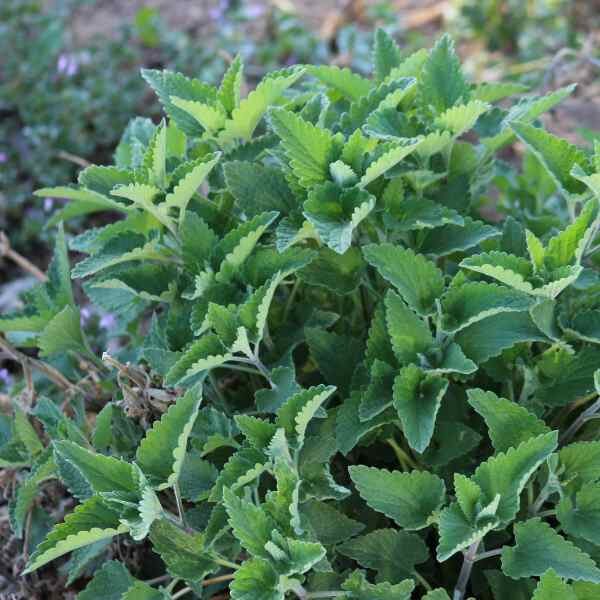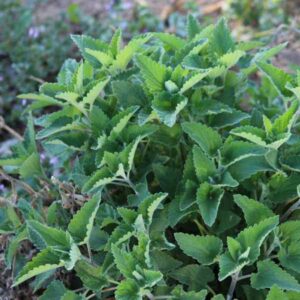Catnip
$4.95
Nepeta Cataria
- Seed count 400
- Medicinal Herb
- Perennial
In stock
Description
Catnip is a hardy perennial thrives without fuss, offering a lush, mint-scented presence in beds or pots. Its heart-shaped leaves and delicate blue flowers might seem modest, but beneath that greenery lies a plant brimming with purpose, both for our feline companions and ourselves.
For Cats the compound nepetalactone in its leaves acts as a natural stimulant, triggering everything from euphoric rolling and rubbing to energetic bursts of play. Not every cat responds, but for those that do, fresh catnip becomes a safe, enriching treat. Sprinkle dried leaves on scratching posts to redirect clawing habits, or stuff a homemade toy with homegrown catnip to reward curious kittens. Interestingly, in smaller doses, catnip can also have a mellowing effect; a pinch in a travel carrier may soothe a nervous cat during vet trips.
Beyond its role as a feline entertainer, catnip has a storied past in herbal traditions. The leaves and flowers, when dried, brew into a mild, grassy tea that’s been sipped for centuries. Unlike its mint relatives, catnip tea carries a subtle earthiness, often paired with honey or lemon. Historically, it’s been embraced for its calming properties, a cup before bed to ease restlessness, or during stressful days to take the edge off. Some herbalists have also used it to support digestion or relieve mild headaches, though it’s always wise to consult a professional before diving into herbal remedies.
Topically, catnip’s applications stretch further. Crushed leaves can be infused into oils or salves for minor skin irritations, thanks to gentle anti-inflammatory qualities. Gardeners might even appreciate its reputation as a mosquito deterrent – a handful of bruised leaves rubbed on skin offers a short-term, chemical-free shield against bites.
This attractive perennial looks wonderful when covered in flower from early summer with its pale, lavender-blue flowers perfectly complement the hairy, scalloped and wrinkled, silvery, blue-green leaves. From afar the flowers appear as a haze of blue. It is a magnet for butterflies, hummingbirds and especially bees.
| Method: Raise Seedlingd | Soil Temp: 21°C - 24°C |
| Cool Mountain: Sep - Dec | Position: Full sun |
| Arid: Jun, Jul/Apr, May | Row Spacing: 30 cm |
| Temperate: Aug, Nov/Mar, Jun | Planting Depth: 1 mm |
| Sub Tropical: Aug, Nov/Mar, Jun | Harvest: 90 days |
| Tropical: Apr - Jul | Plant Height: 150 cm |
Basics
- Capsicum (sweet/bell Capsicum) thrives in warm, sunny gardens.
- Plant them in a spot with full sun (6+ hours) and rich, well-drained soil.
- Prepare the bed by removing weeds and digging in plenty of compost or aged manure.
- Use mulch around plants to retain moisture and suppress weeds.
Seed Trays vs Direct Sowing
Seedling Trays:
- Raise seeds in pots or trays filled with seedling mix, keeping them warm (16-35°C) and moist.
- This protected start speeds germination and gives plants a head start on weeds and weather.
- You’ll use fewer seeds and get sturdy seedlings for an earlier crop.
- The downside is extra effort and cost (pots, mix, heat source) and you must harden-off seedlings before planting out.
Direct Sowing:
- Plant seeds 3mm deep in the garden soil 50cm between plants, 60–100cm once it’s warm and frost-free.
- Direct sowing is simpler and cheaper (no trays or special mix), but germination is slower and more vulnerable to cold, pests or heavy rain.
- Capsicum seeds can take 1–3 weeks to sprout at 16–35°C.
- Ensure the soil stays evenly moist (not waterlogged) during this time.
In short: use trays if you want the best germination and an early start; sow direct if you prefer simplicity and have already warm conditions.
Planting and General Care
Timing & Spacing:
- Plant or transplant capsicum after all danger of frost has passed.
- In tropical/subtropical areas, Capsicums can even fruit year-round, but in cooler zones treat them as an annual summer crop.
Soil:
- Use well-drained, fertile soil rich in organic matter.
- Work in compost or aged manure before planting.
- Capsicums prefer a slightly acidic to neutral pH (~6.0–7.0).
- In pots, use at least ~40L per plant.
Watering:
- Water deeply and regularly, so the soil stays evenly moist.
- Check soil moisture by pushing a finger 4–5cm down; water when that layer is just dry.
- Water in the early morning or late afternoon to minimize stress.
- Avoid wetting the leaves, which can encourage fungal disease.
- Mulch around plants to keep roots cool and reduce evaporation.
Fertilising:
- If the soil was well-prepared, you may need little extra feed.
- Otherwise, apply a balanced (e.g. 10-10-10 NPK) slow-release fertilizer at planting.
- Once flowers and fruit start, give a liquid tomato or vegetable fertilizer every few weeks according to label directions.
- This supports heavy fruiting. Avoid excessive nitrogen late in the season, as it can reduce fruit set.
Staking & Pruning:
- Capsicum plants can get top-heavy with fruit. Stake or cage them when planting.
- A simple sturdy stake beside each plant works – gently tie the main stem (e.g. with soft string) as it grows.
- This prevents wind damage and keeps fruit off the ground.
- Remove any low or damaged leaves to improve air flow.
- Many gardeners also pinch out a few early flower buds when plants are young – this encourages stronger vegetative growth and heavier later yields.
- Overall, little pruning is needed beyond this.
Pest & Disease Management:
- Monitor plants for pests like aphids, caterpillars, slugs/snails, and chilli thrip.
- Hand-pick pests or use organic sprays if needed.
- Practice good hygiene: remove weeds and crop debris.
- Rotate capsicum/solanaceous crops to a different spot each year to reduce disease pressure.
- Common diseases include blossom-end rot (from inconsistent watering or low calcium) and fungal spots.
- Regular watering and mulch help prevent blossom-end rot.
- Crop rotation and not overcrowding plants also reduce problems.
Chilli Thrips: What They Are & How to Deal With Them
- Chilli thrips (Scirtothrips dorsalis) are tiny, slender insects that can cause big problems in home veggie patches—especially for capsicum, chilli, eggplant, and tomato plants.
- You might not see them easily (they’re less than 2mm long!), but the damage is easy to spot as leaves curl or look bronzed and scarred, buds drop off, and fruit can become deformed or scarred.
- These pests feed by piercing plant tissue and sucking out the juices, which leads to silvery or brown patches on leaves and distorted growth.
- They tend to hang out on the newest growth, flower buds, or the undersides of leaves—so grab a magnifying glass and check these spots first if your plants are looking stressed.
What You Can Do:
Prevention is key:
- Start clean – Avoid bringing in infested seedlings or cuttings.
- Attract beneficial bugs like lady beetles, lacewings, and predatory mites—they’ll help keep thrip numbers down.
- Plant flowers like alyssum, marigold, or dill nearby to draw in the good guys.
If they show up:
- Prune affected areas early to stop the spread.
- Hose them off gently with water to dislodge thrips from foliage.
- Apply insecticidal soap or horticultural oil, covering all leaf surfaces, especially underneath. Repeat weekly as needed.
- Rotate your crops each year to disrupt their lifecycle.
Tip: Thrips love hot, dry conditions—so keep your plants well-watered and mulched to reduce stress and deter infestations.
Companion Planting with Capsicum
Good companions:
- Herbs & Flowers: Basil, dill, parsley, coriander, chamomile and other aromatic herbs as they attract beneficial insects and may repel aphids or whiteflies. Garlic, onions, chives as their strong scent deters many pests. Marigolds, nasturtiums, borage, lavender as these flowers lure pollinators and trap pests (marigolds are famous for nematode control).
- Vegetables: Carrots, lettuce, spinach as they occupy shallow roots and don’t compete much with Capsicums. These can provide light ground cover under Capsicum plants. Tomatoes are sometimes planted alongside Capsicums (both like similar conditions) but be aware they share some pests/diseases so give them space and rotate beds regularly.
- Fruits: Strawberries and cucumbers have been noted as decent neighbours (shallow roots and shade from cucumber leaves can protect Capsicums).
Bad Companions
- Other heavy feeders or close relatives.
- Do not grow next to eggplants, potatoes or tomatoes in succession, as they share pests/diseases.
- Stay away from beans/peas and plants like fennel or dill, which can inhibit Capsicum growth.
- Squash and pumpkins (deep-rooted cucurbits) can out-compete Capsicums for nutrients.
- In short, pair Capsicums with light-feeders and pest-deterring plants, and keep them apart from other nightshades and big gourds.
Seed Saving
Saving your own Capsicum seeds is easy if you follow a few simple steps:
Select plants:
- Pick the healthiest plants with strong, typical fruit.
- If growing multiple types, isolate them (e.g. bag flowers or keep 20m+ apart) to prevent cross-pollination.
Harvest ripe fruits:
- Wait until Capsicums are fully ripe on the plant which is usually when they’ve changed to their final colour and just start to soften or wrinkle.
- Allowing fruits to over ripen a little ensures the seeds are mature.
Extract seeds:
- Cut the Capsicum in half and scoop or twist out the central core.
- Scrape out the seeds and remove as much of the inner flesh and pith as possible.
- Rinse the seeds in clean water to wash off any remaining pulp which helps them dry cleanly.
Dry seeds:
- Spread the seeds in a single layer on paper towels or a clean plate in a dry, shaded place.
- Let them dry completely over several days.
- They’re ready when you can crunch a seed in your fingers and it snaps rather than bends.
- Moisture is the enemy of seed storage, so make sure they feel fully dry.
Store seeds:
- Transfer the dried seeds to a paper envelope or small jar with a tight lid.
- Label with variety and date.
- Store in a cool, dark, dry spot (a refrigerator works well).
- Properly stored Capsicum seeds remain viable for about 3–4 years, so you’ll have plants for many seasons.
Climate and Growing Conditions
Catnip thrives in temperate climates but can adapt to a range of conditions.
Temperature:
- 15–25°C ideal range
- In hotter areas, consider growing it in pots and moving it into a shadier spot during summer.
Sunlight:
- Full sun to partial shade (at least 6 hours of sunlight daily).
Frost Tolerance:
- Catnip can tolerate light frost but may struggle in very cold regions.
- In cooler areas, consider growing it in pots and moving it indoors during winter.
Preparing the Soil
Catnip prefers well-draining soil with a neutral to slightly alkaline pH (6.0–7.5).
Soil Type:
- Sandy loam or loamy soil is ideal. If your soil is heavy clay, amend it with compost or sand to improve drainage.
pH Level:
- Test the soil pH and adjust if necessary.
- Add lime to raise pH or sulphur to lower it.
Organic Matter:
- Mix in compost or well-rotted manure to enrich the soil.
Sowing Catnip Seeds
Direct Sowing:
- Choose a sunny spot in your garden.
- Scatter the seeds lightly over the soil surface.
- Cover the seeds with a thin layer of soil (about 1 mm deep).
- Water gently to avoid displacing the seeds.
- Space plants 30 cm apart to allow for growth.
Starting Seeds Indoors:
- Fill seed trays or small pots with seed raising mix.
- Sow 2–3 seeds per cell or pot, covering lightly with 1 mm soil.
- Water gently and place in a warm, sunny location (or under grow lights).
- Seeds typically germinate in 7–14 days.
- Transplant seedlings outdoors once they are 5–7 cm tall and the risk of frost has passed.
Watering and Care
Watering:
- Keep the soil consistently moist but not waterlogged.
- Water when the top 2–3 cm of soil feels dry.
Mulching:
- Apply a layer of mulch around the plants to retain moisture and suppress weeds.
Fertilising:
- Catnip doesn’t require heavy feeding.
- Apply a balanced, slow-release fertiliser once or twice during the growing season.
Pruning and Maintenance
Pruning:
- Regularly trim the plant to encourage bushier growth and prevent it from becoming leggy.
- Pinch off the tips of young plants to promote branching.
Deadheading:
- Remove spent flowers to prevent self-seeding and encourage more leaf growth.
Pests and Diseases:
- Catnip is relatively pest resistant but can occasionally attract aphids or spider mites.
- Use insecticidal soap or neem oil if needed.
Harvesting Catnip
When to Harvest:
- Harvest leaves and stems just before the plant flowers for the highest concentration of essential oils.
How to Harvest:
- Cut stems about 5–10 cm above the ground.
- You can harvest multiple times during the growing season.
Drying:
- Hang stems upside down in a cool, dry, well-ventilated area.
- Once dry, store leaves in an airtight container away from light and moisture.
Growing Catnip in Pots
Catnip grows well in containers, making it ideal for balconies or small spaces.
- Use a pot at least 20–30 cm deep with drainage holes.
- Fill with a high-quality potting mix.
- Place the pot in a sunny location and water regularly.
Common Problems and Solutions
Leggy Growth:
- Caused by insufficient light.
- Move the plant to a sunnier spot or prune regularly.
Yellowing Leaves:
- Overwatering or poor drainage.
- Ensure the soil drains well and reduce watering.
Self Seeding:
- Catnip can spread quickly if not managed.
- Remove flowers before they set seed if you want to control its spread.
Postage Charge
Orders under $30 attract a $4.95 shipping charge. Orders $30 and above have free shipping.
Order Times
Seed orders are normally dispatched within three business days. You will receive an email when seeds are mailed out.
Postage Days
Seeds are mailed out Monday to Friday at 1pm. Except for the Friday of long weekends.
Postage Times
WA 2-3 Days: SA,NT 3-5 Days: NSW, ACT, QLD, VIC: 5-7 Days
Carrier
We use Australia Post Letter Postage for the majority of orders
Not only are our seeds packed in recycled paper envelopes, we keep the theme going when we post out website orders. To protect your seeds from moisture and the letter box munchers (snails), we use a very special plastic free material made from plants. They are then put into recycled mailing envelopes. Green all the way 💚🌿













Haven’t planted as I’m moving house